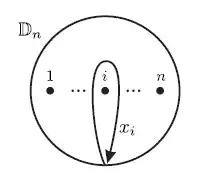To answer your first question in detail, let's represent the closed curve by a continuous function $f : S^1 \to F$, where $F$ is the given surface.
In a setting where a particular set $A$ is given, I might speak about whether "$f$ is homotopic to a function with values in $A$". Each of the three cases you ask about -- point, puncture, and boundary component -- can be reworded to fit this setting.
To say "the closed curve is not homotopic to a point" means that $f$ is not homotopic to a function which maps $S^1$ to a point, in other words $f$ is not homotopic to a constant function.
To say "the closed curve is not homotopic to a puncture" means that $f$ is not homotopic to a function which maps $S^1$ to an open annulus neighborhood of a puncture.
To say "the closed curve is not homotopic to a boundary component" means that $f$ is not homotopic to a function which maps $S^1$ to a component of $\partial F$.
If the surface $F$ has no puncture nor boundary point, then to be essential is equivalent to saying that the curve is not homotopic to a point. You can use the fundamental group or the first homology group to provide many examples. For instance, in the torus $S^1 \times S^1$, the closed curve $\{\text{point}\} \times S^1$ represents a nonzero element of $H_1(S^1 \times S^1)$ and is therefore not homotopic to a point, hence is essential.
